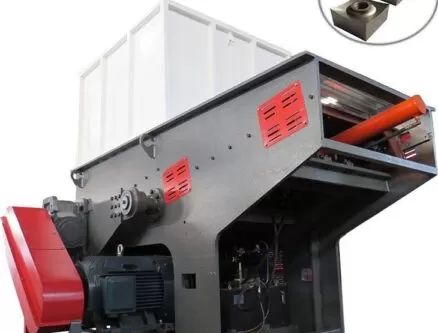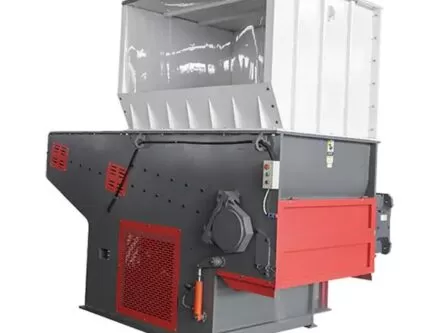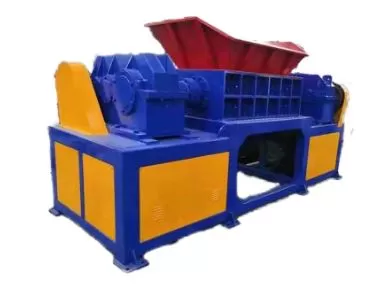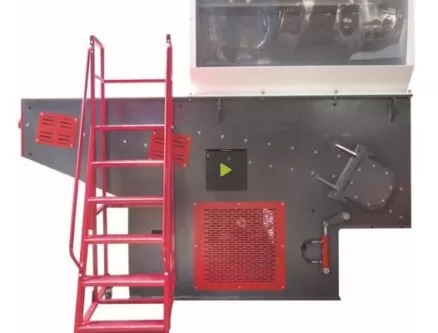The global plastic crisis is no longer knocking on our door—it’s barging in with muddy shoes and a suitcase full of problems. Landfills are overflowing, oceans are choking, and yet the plastic production party hasn’t slowed down. The world is rolling out plastic waste reduction plans, but let’s be honest: without proper processing tech—like industrial shredders—we’re just tossing spaghetti at the wall and calling it strategy.
Plastic shredding technology plays a critical role in global plastic waste reduction plans by enabling efficient preprocessing, reducing transportation volumes, and increasing recycling yield through cleaner, size-optimized output.
If that sounds like a mouthful, don’t worry—I’ll break it down and spice it up. After all, I run Amige. We don’t just shred plastic. We slice through inefficiency like a hot knife through PET.
Let’s talk about how shredders are turning waste management into a well-oiled (but eco-friendly) machine.

Why is shredding the starting point of efficient plastic recycling?
Every good recycling process begins with a good breakup. And that means shredding.
Plastic waste comes in all shapes—bottles, crates, films, pipes, car bumpers, you name it. Tossing these directly into a washing or pelletizing line? Not smart. It’s like trying to microwave a frozen turkey whole.
Our shredders at Amige turn bulky, contaminated plastic waste into uniform flakes or granules. That’s critical for improving downstream processing efficiency, reducing wear on machinery, and maximizing material recovery.
Plus, it’s more space-efficient. Shredded plastic takes up to 70% less volume, which lowers storage and transportation costs.
How does shredding improve contamination control?
You can’t recycle dirty plastic. Well, you can try—but it’ll end up as sludge or rejected fluff.
One thing I preach all the time: clean input equals quality output. And shredding helps.
By breaking plastic into smaller pieces, we expose more surface area. This allows washing lines to do a better job removing labels, dirt, oils, and food residues.
Some of our clients even use wet shredding, which introduces water during the cutting process. This pre-washes the material and cuts down on energy use in later stages.
In other words, shredding is the shower before the makeover. Crucial.
Are shredders adaptable to different types of plastic?
Absolutely. And they better be—because real-world plastic waste is anything but uniform.
That’s why our machines come with interchangeable blades, adjustable cutting chambers, and smart load sensors. We can shred thick HDPE pipes one day and soft LDPE films the next.
In global waste reduction programs, this flexibility is golden. Especially in regions where sorting infrastructure isn’t perfect and mixed waste streams are common.
Our twin-shaft shredders don’t complain about variety. They eat everything—except metal. (For that, we use a metal detector and auto-reject system. Ask me about the time someone fed in a whole wrench…)

What’s the role of shredding in waste-to-resource transformation?
Let’s talk circular economy.
The whole point of waste reduction isn’t just to recycle more—it’s to turn trash into usable materials. And shredding is the gatekeeper of that transformation.
When we reduce plastic into consistent, small-sized particles, we enable:
- Easier melting and pelletizing
- Precise blending with virgin material
- Efficient integration into new product molds
This is the backbone of closed-loop recycling systems, where products become products again.
Our clients in automotive and packaging reuse shredded plastic to create dashboards, pallets, crates, and more.
Shred once, reuse forever? That’s the dream.
Can shredding help emerging markets deal with plastic waste?
Oh yes—and they need it the most.
In many developing regions, plastic waste management is still manual, inefficient, and dangerous. Yet, these areas are also facing the highest growth in plastic consumption.
We’ve worked with partners in Southeast Asia, Africa, and Latin America to introduce low-maintenance, energy-efficient shredders. Some even run on solar. Think village-level shredding stations that empower local cooperatives.
The result? Less open dumping. More local jobs. And higher plastic reuse rates without massive capital investment.
It’s not just tech—it’s dignity.

How do shredders fit into global policy frameworks?
Remember those global waste reduction goals set by the UN, EU, and others? They sound great on paper—“reduce plastic waste by 50% by 2030,” “phase out landfill use,” and so on.
But you can’t meet targets with slogans. You need machines.
Shredding systems are now being directly cited in national policy toolkits. For example, the EU Circular Plastics Alliance recommends decentralized shredding hubs to improve regional recycling output.
We work with governments and recyclers to deploy plug-and-play shredding units in strategic zones—landfill edges, ports, industrial parks. Think of it as surgical strikes against plastic chaos.
And hey, if any policymakers are reading this—I’m happy to design your country’s shredder roadmap. No charge for the first consultation. 😉
Are there innovations pushing shredder efficiency further?
Absolutely—and you bet Amige is leading the charge.
Our newest models come with AI-powered monitoring systems. They track vibration, torque, and temperature in real-time, sending alerts if something’s off. Fewer breakdowns, more uptime.
We’re also testing laser-assisted plastic detection before shredding to automate sorting on the fly. Imagine a system that not only shreds but knows what it’s shredding and where it should go next.
Efficiency isn’t just speed. It’s intelligence. And I’m proud that our machines are getting smarter every year.
What’s the bottom line for recyclers and manufacturers?
Simple: if you’re serious about plastic waste reduction, invest in shredding first.
Whether you’re a bottle recycler, a furniture factory, or a city sanitation department, shredding is the great equalizer. It brings volume down, quality up, and costs in check.
Don’t wait for someone else to solve the plastic problem. Get a shredder, and be part of the solution.
Need help choosing one? Let’s talk. I’ll even throw in a dad joke with every quote.

Conclusion
Plastic shredding is the unsung hero in global waste reduction plans. It turns chaos into order, waste into resource, and intention into action. It’s not just a machine—it’s the beginning of a cleaner future.
